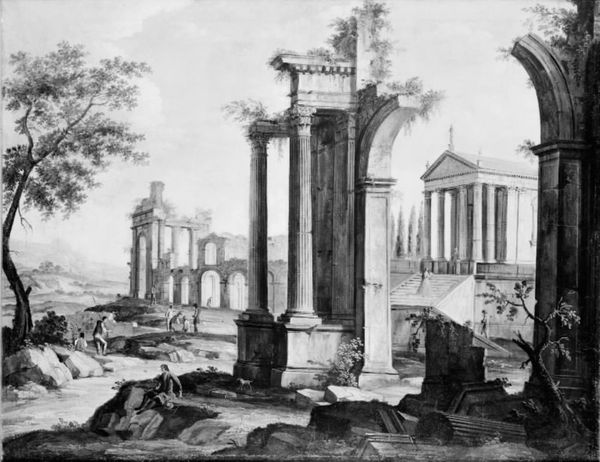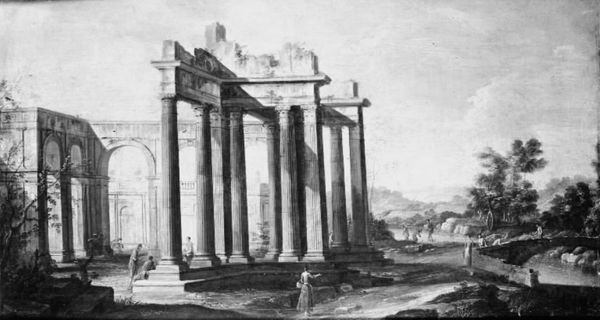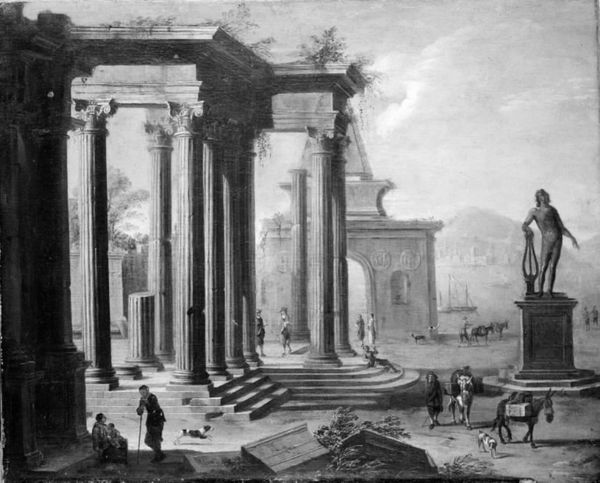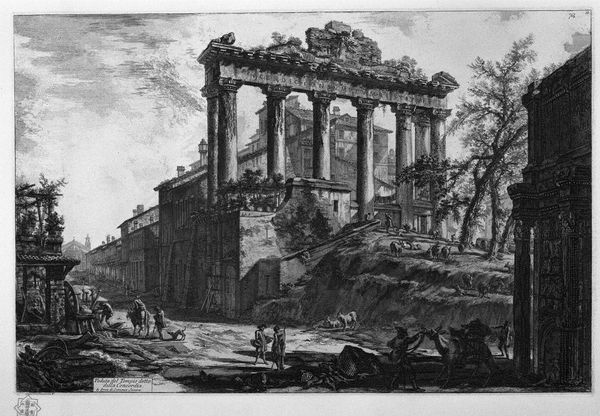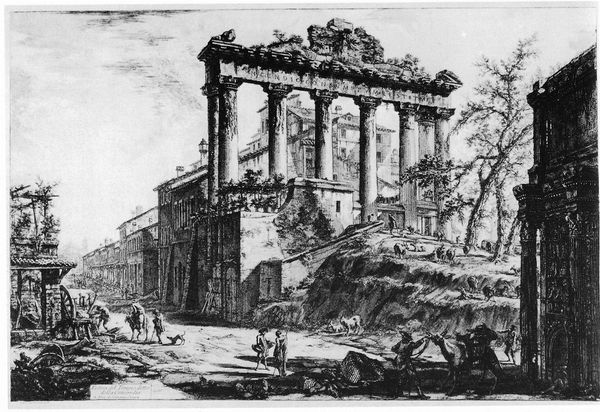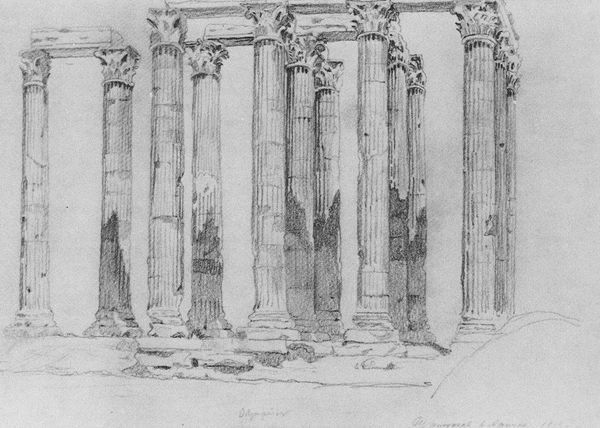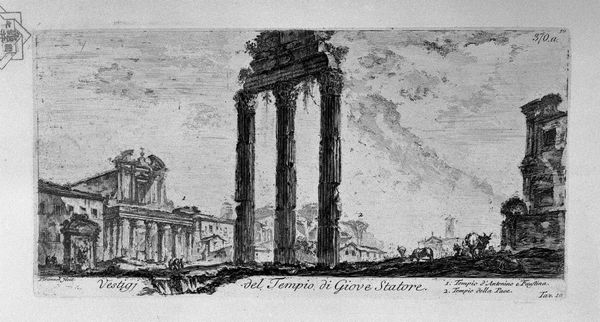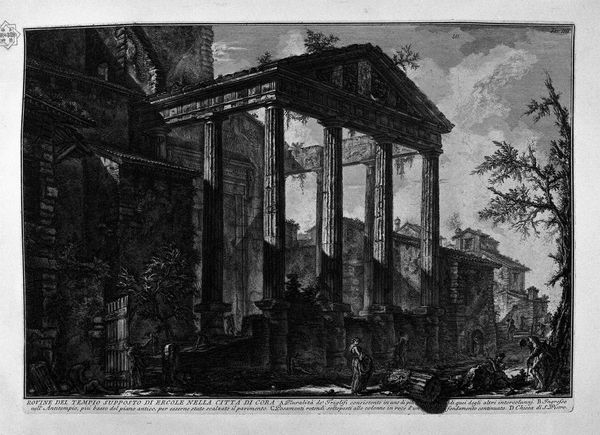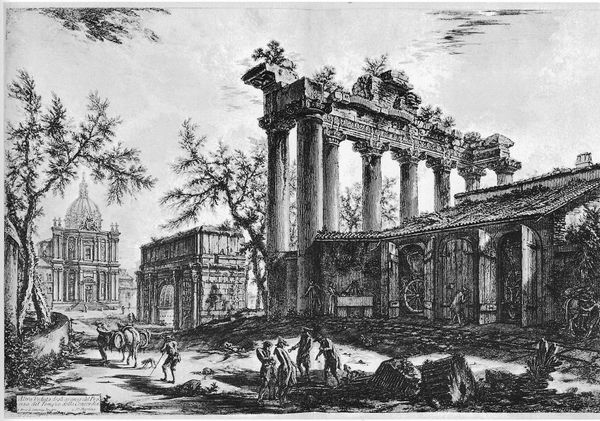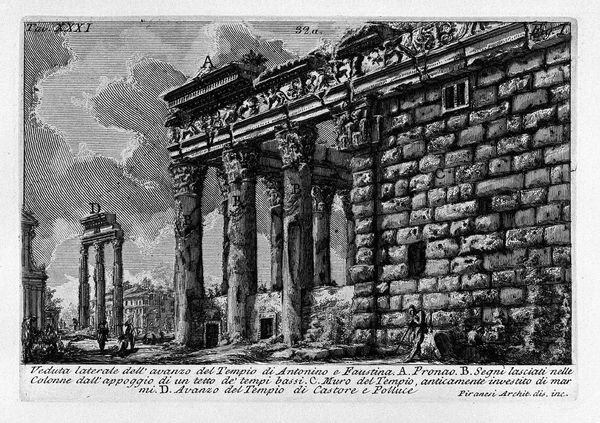
Decorative Landscape with Imaginary Architecture 18th century
0:00
0:00
drawing, charcoal, architecture
#
drawing
#
landscape
#
classical-realism
#
charcoal drawing
#
geometric
#
cityscape
#
charcoal
#
academic-art
#
charcoal
#
graphite
#
architecture
Dimensions: 105.5 cm (height) x 135.5 cm (width) (Netto)
Editor: So this is Giovanni Antonio Cesari’s "Decorative Landscape with Imaginary Architecture," an 18th-century charcoal drawing. It feels quite grand and…almost melancholy? It's monochrome with ruins alongside seemingly functional architecture. What draws your attention to this piece? Curator: I'm immediately interested in the labor implied, and perhaps obscured, in the drawing's very creation. Look closely at the charcoal: where do you think it came from, and who transformed it into a tool? Editor: Well, charcoal comes from burnt wood, so...someone must have charred wood, then prepared it for drawing, I guess? What does that tell us? Curator: Precisely. Consider the societal implications. This isn't just a landscape; it’s a product of resources and labor, reflecting a specific social order. The classical architectural imagery reinforces elite ideals, yet the drawing itself relies on materials obtained and processed through more humble means. Note, too, how architectural drawing itself as a skill to be mastered was largely reserved for male artisans. Editor: That's fascinating. It makes you think about the relationship between high culture and the everyday realities needed to produce it. How do you mean? Curator: Well, this imagined architecture, this scene of leisurely figures, all relies on extraction and preparation, processes often invisible in the final product. The very act of creating this 'decorative' landscape, a luxury item, hinges on layers of material processes and often invisible or suppressed forms of labor. The graphite itself must have been transported and sold. We see the elite enjoying the aesthetic outcome. We don't see the hands that produced it. Editor: That’s given me a totally different perspective. I initially saw a pretty drawing of some old buildings, but now I’m seeing it as evidence of a whole economic and social system at play. Curator: Exactly. By focusing on materiality and the means of production, we uncover these often overlooked connections between art, labor, and social hierarchies.
Comments
No comments
Be the first to comment and join the conversation on the ultimate creative platform.

